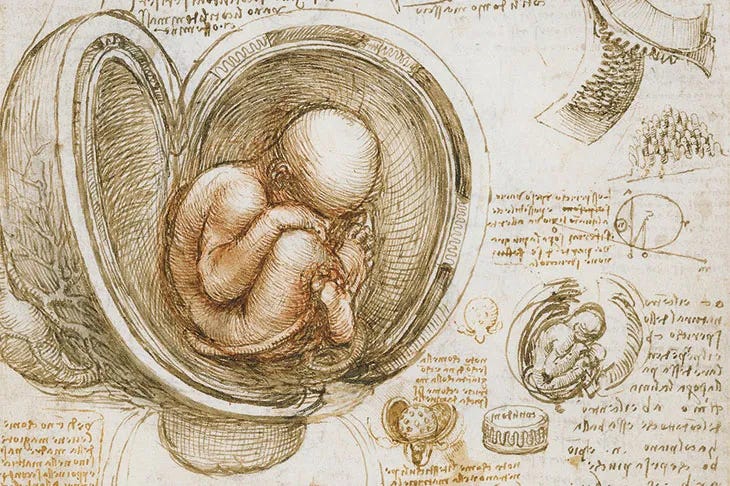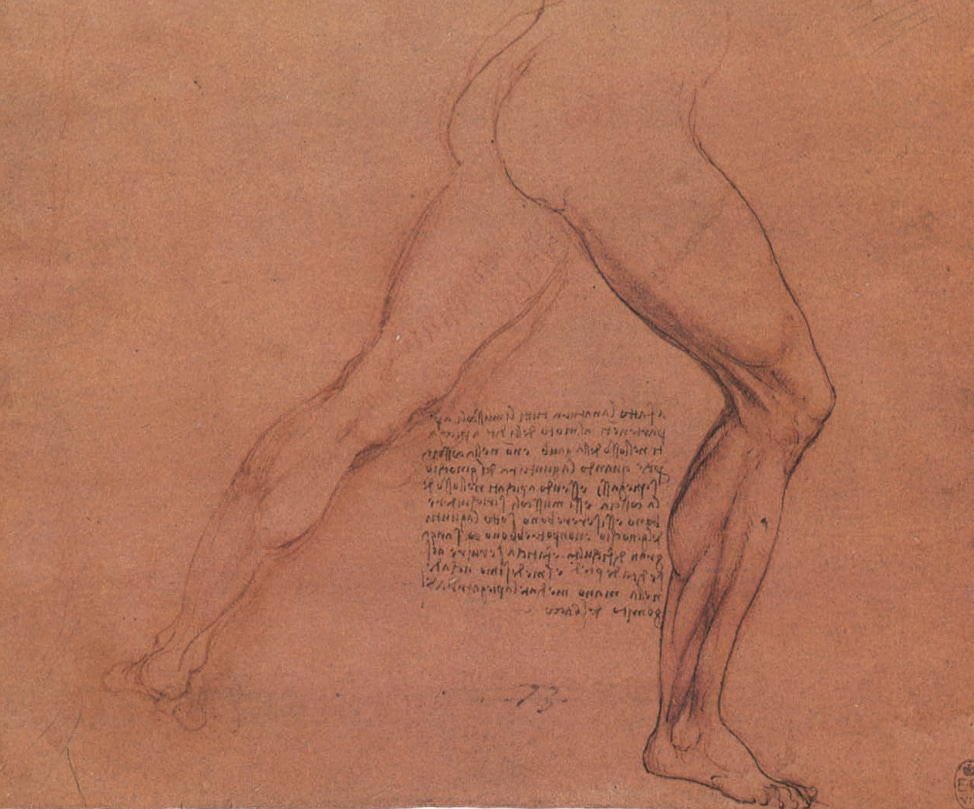The use of drawing gives "knowledge that is impossible for ancient or modern writers [to convey] without an infinitely tedious example and confused prolixity of writing and time.
~ Leonardo da Vinci
Imagining myself in the pre-renaissance Italy conducting dissections to study human anatomy, trying to draw my observations with precision, adding 3D perspective to those drawings - I can’t. I can’t even imagine myself doing all that even today. Leonardo is the goat - for real.
I struggle with memorising anatomy and relative positions. I mean, who doesn’t? So what were Leonardo’s techniques that made things easier for him?
Drawing skills
Firstly, he was gooood at drawing and painting. He conducted some anatomical dissections initially but abandoned his work for 20 years as he went on to work on painting nature with 3D perspective - he studied how light works and how various objects are perceived with light falling from different angles, and how their shadows influence how the objects are perceived. This was when he learnt how to paint landscapes, portraits, and draw awesome machinery blueprints with greater accuracy. You won’t believe it, but his blueprint’s proportions were made to be exactly matched with the actual machinery, making their construction easier and accurate. That was the level of precision he mastered.
Dissection
Secondly, when he realised how nature and humans were closely related and how human soul had connection with the nature, he came back to work on human anatomy (context: basically during his time in 1400s the anatomy of head and neck drew conclusions that human brain was the center of all senses and hence the soul and eyes acted as a window that opened doors for the soul to see nature - brain is located behind the orbits of eye).
He conducted several dissections. His first was of a person who died naturally, without any illness, and he described his body as devoid of fat and bad humors, which enabled him to conduct a better dissection and study the structures with greater detail. A reminder that embalming(a cadaveric preservation method where blood is let out and embalming fluid is pumped into the vessels) was not in practice during his time, which means blood would be everywhere after incision - staining everything red - making observation of structures difficult and chaotic.
He mentions how one needs several dissections to study human anatomy. He praises himself in a paragraph where he says how he slept for decades together with cadavers, with their guts out, and applied his skills - drawing, perspective, physics, engineering - into drawing those anatomical drawings with precision. He says that one would need 3 dissections to study arteries and veins, 3 more for membranes, 3 for nerves, muscles and ligaments, 3 for bones and cartilage, 3 to study anatomy of bones(ones with cavities(long bones) and ones without cavities(flatbones, irregular bones)) and 3 dedicated to female cadavers to study the womb and its fetus. Implying if someone thought of doing the same thing again, they would come to similar conclusions, and his work and drawings would still be of superior quality. He indirectly said, stfu and read from my books.
Observation of Movements
Thirdly, he used threads - tied them at the origin and insertion of muscles to simulate muscles- to demonstrate bones and muscles act as pulleys and levers to derive motion of the body - demonstrating biomechanics of human motion. He studied how our body moves and which muscles contract when doing a particular motion. He drew various nude drawings of live subjects demonstrating the contractions and extensions of muscle groups. Some quote that Leonardo was shredded, which kinda helped him build interest in human anatomy.
Visual representation over text
Fourthly, he prioritised visual representations over text. Channeling all of his time towards drawing and less towards putting in words - words which would eventually paint a similar picture of the visual representation of his drawings. He snuck in a drawing next to TL;DR.
The use of drawing gives "knowledge that is impossible for ancient or modern writers [to convey] without an infinitely tedious example and confused prolixity of writing and time.
To conclude, Visual representation of anatomy through drawing is the best way to study and learn anatomy rather than reading text. Drawing anatomy is the way to go if one wants to level up their anatomy game.
PS: I’m not saying visual representation is superior to text all the time. It does work that way when it comes to anatomy though.
source, book: Leonardo da Vinci Anatomical Drawings from the Royal Library, Windsor Castle.





0 Comments